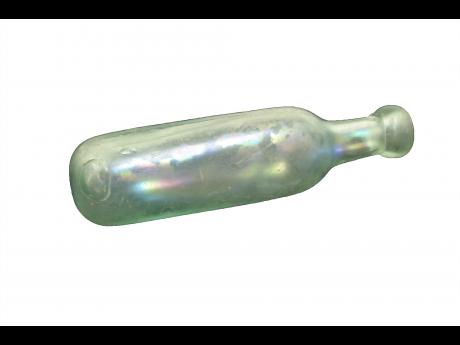The history of fizz
Carbonated water, soda pop, fizzy water, soda water, or soft drinks, as they are more commonly called, and their containers, have a very interesting history.
Author of The Soft Drinks Companion Maurice Shachman says that carbonated water was first found in natural springs. Persons believed that bathing in such waters had great health benefits. Persons also thought that naturally occurring carbonated water cured a variety of illnesses. Therefore, the natural conclusion was that when portable, drinking carbonated water would also contribute to one's health.
Many historical records have credited English scientist Joseph Priestly with producing the first drinkable glass of artificially carbonated water in 1767 by dissolving the gas formed during the fermentation process of a nearby brewery in the water, not knowing at the time that it was carbon dioxide gas.
According to Tristan Donovan, author of Fizz: How Soda Shook Up the World, this process was later perfected by Jean Jacob Schweppe, a master jeweller and amateur scientist. The idea of recreating the bubbling waters of nature intrigued Schweppe.
Keen to find out what artificial mineral water tasted like, he built a replica of Priestley's apparatus and produced his first batch of fizzy water. He was able to perfect Priestly's method. According to Donovan, Schweppe had a working system in place by 1780, but he would spend the next three years perfecting it. He was now able to produce greater volumes of more intensely carbonated water.
Refused by doctors
Rather than wasting the bubbly waters he made, he started giving them away to local doctors, hoping that they could use it to treat the poor in the city of Geneva, Switzerland. But many doctors refused to take the water for free and Scheweppes reluctantly took a small fee to cover his expenses.
Word of his carbonated water spread, and by the end of the 1780s, it was being exported outside of Switzerland in stoneware bottles that Schweppe insisted on having laid flat during transit so that the moistened cork expanded, preventing the escaping of gas and the water becoming flat during transit.
The stoneware bottles proved to be unsuitable for the long-term storage and transport of carbonated water because of their porous nature.
According to Marc Allum (2016), a man called William Hamilton was looking for a solution for storing carbonated water because the corks of the bottle dried out. He designed an ovoid-shaped bottle in 1814 specifically so that the bottles would lie on their sides, thus keeping the cork of the bottle damp and swollen. These bottles were known as "Hamiltons" after their inventor Paul Hamilton or as round-bottom, egg and bomb bottles.
Round-bottom bottles can be classified into two types. The earlier torpedo style which is defined by its ovoid body shape with a pointed base was in manufacture from the early 19th century to the 1880s. The later style, which was known as the cylinder bottle, was designed with the more common straight sides but had a bottom that was evenly rounded.
This type began replacing the torpedo in the 1870s, presumably for improved storage, and continued into the early 20th century. This new style of cylinder bottles was sometimes referred to as "cucumbers" in England.
The most common colours for round-bottom bottles, especially towards the end of the 19th Century, were sea foam or light aqua. Various shades of green, amber, and even the rare cobalt were produced in limited numbers throughout the 19th Century. These bottles became a standard in the Victorian period.
These particular bottles were found in Port Royal in different excavations. Recovering these bottles proves that the city of Port Royal was indeed an integral port for importing and exporting goods around the world.
Sources
Allum, M. (2016). Allum's Antiques Almanac 2016: An Annual Compendium of Stories and Facts from the World of Art and Antiques From BBC Antiques Roadshowregular Marc Allum. London, UK. Icon Books Ltd.
Donovan, T. (2014). Fizz: How Soda Shook up the World. 814 North Franklin Street, Chicago: Illinois. Chicago Review Press Incorporated.
Shachman, M. (2004). The Soft Drinks Companion: A Technical Handbook for the Beverage Industry. Boca Raton: Florida. Taylor and Francais Group.
Torpedo Bottles. (12 July, 2011). Retrieved from http://beachpackagingdesign.com/boxvox/torpedo-bottles
Torpedo Bottle Bottom. (Aug 2014). The Sea Glass Shard of the Month. Retrieved from http://www.seaglassjournal.com/seaglassofthemonth/14-08-torpedo-bottle.h...
- Information compiled by Sharifa Balfour, assistant curator, National Museum Jamaica, Institute of Jamaica


